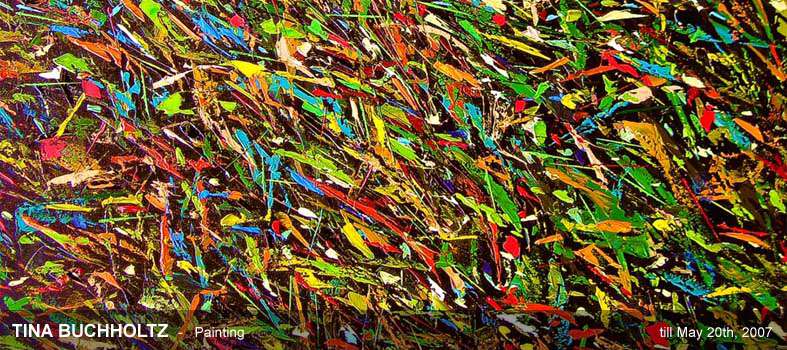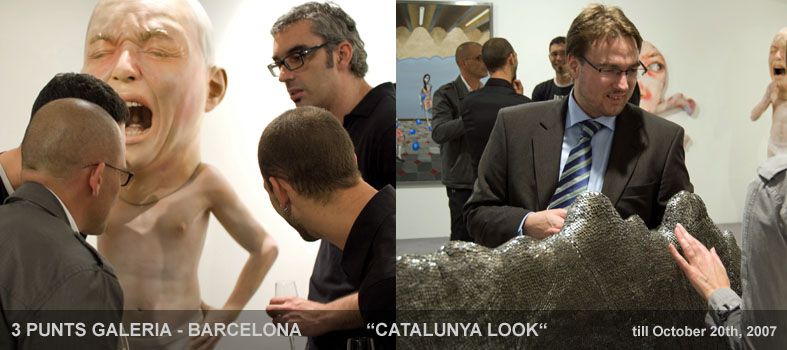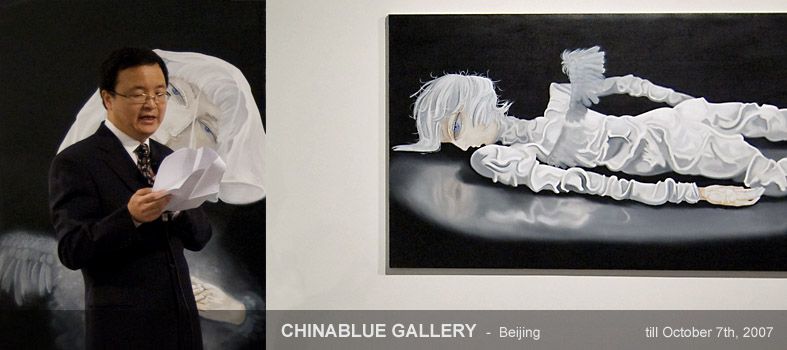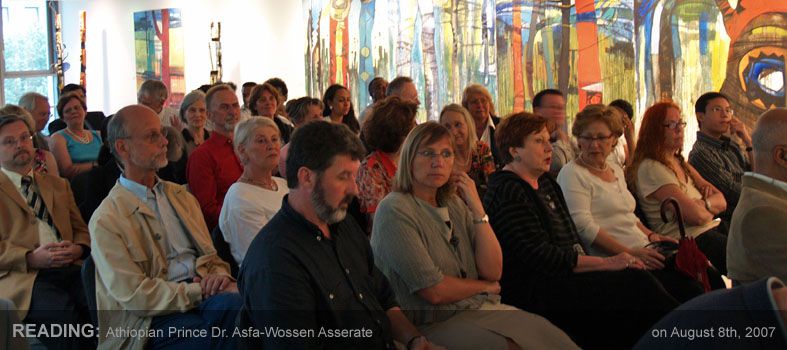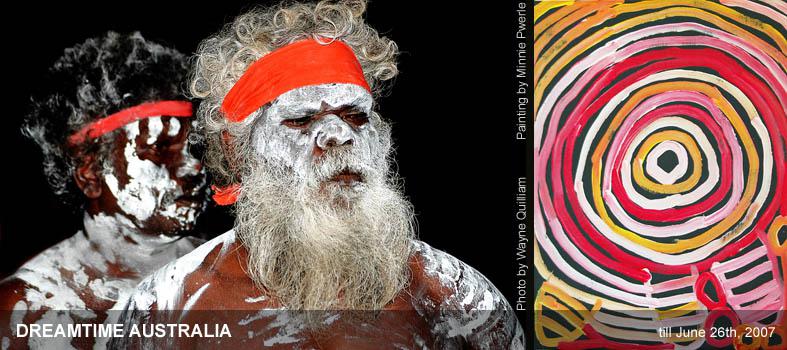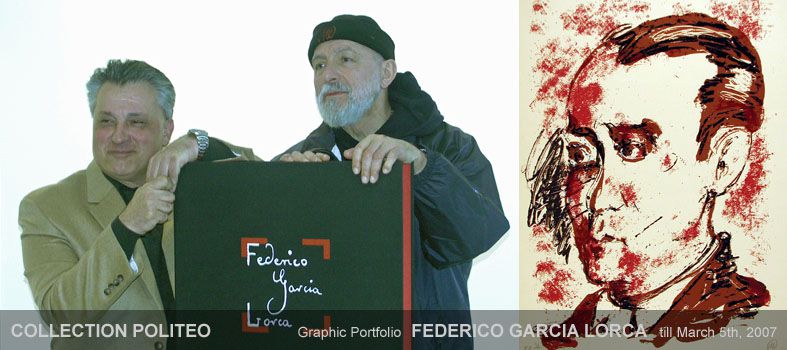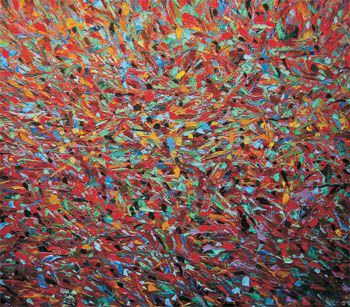
"SOUK" by Tina Buchholtz
140x160cm, acrylic on canvas, 2006
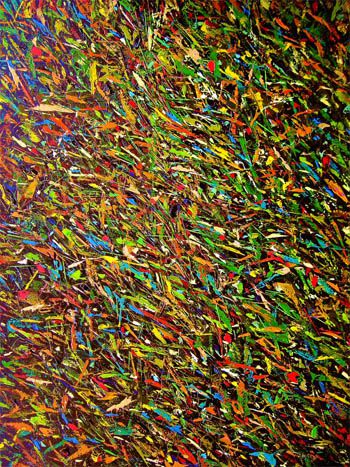
"TUCAN" by Tina Buchholtz
160x120cm, acrylic on canvas, 2006
TINA BUCHHOLTZ - Painting
till 20th May 2007
"The most important element of the pictures of Tina Buchholtz is the line. Lines flow like cascades - sometimes in small runlets, sometimes in large tracks - over the surface of the picture. The small tight pressed line or the thick and generously placed short and powerful strokes create the direction. This unique way of building the picture creates the painting out of the bright or shaded thickness of the flow, out of the rhythm, which is closely connected to the colors. The pictures are filled with atmosphere, impressions, and different moods.
Tina Buchholtz started by painting landscapes. The accurate observation of the nature stood at the very beginning of her artistic career. Particularly the German late romantic painters chose the landscape as their favored motive, too. They did not paint the accurate landscape, but they tried to manifest the inner picture of it.
Looking at the outstanding interaction of stroke and light in the paintings of Tina Buchholtz one could refer to another art style: the French Impressionists of the late 19th Century. They committed themselves to the haptical twinkle of the light, the atmosphere. Stroke and color, mostly complementary, were the instruments of the "daubers" (as they were called disparagingly). The objects vanished into light, the study of the incidence of light was therefore important. The objects dissolved and left a field of rhythmic color tone.
The paintings of Tina Buchholtz are not impressionistic, but her use of rhythm and light is similar to impressionistic paintings. Here, the quaintness with its regular iteration and strictness rather becomes an ornament but systematic atmosphere. It remains not in the way and in the light like the impressionists have done it. The mood of a landscape is not separating between the inner and the outer picture. Rather her paintings are an intense mood of rhythm, color, stroke, and light.
(cited after Dr. Melanie Franke, art historian, German Guggenheim)
